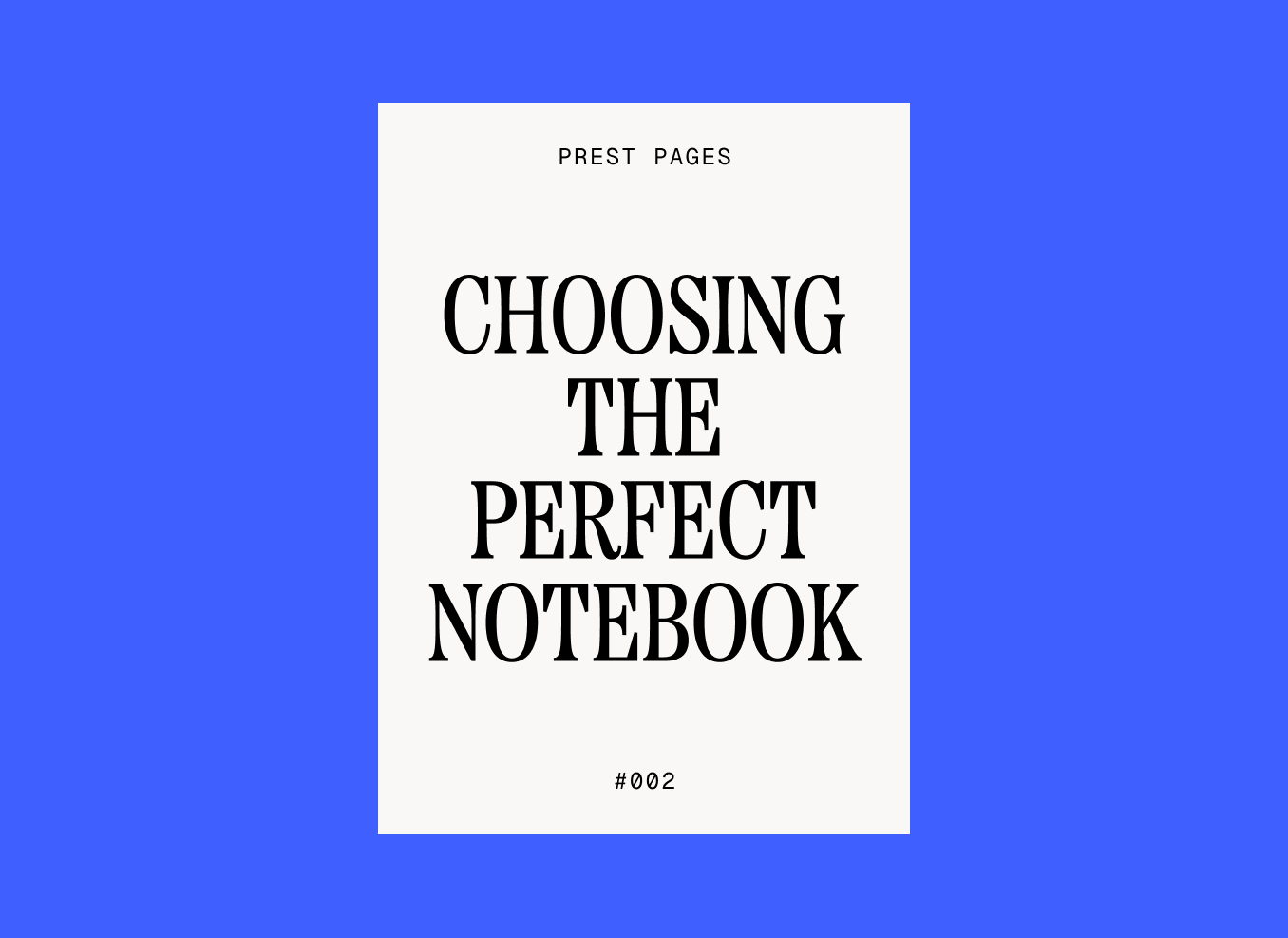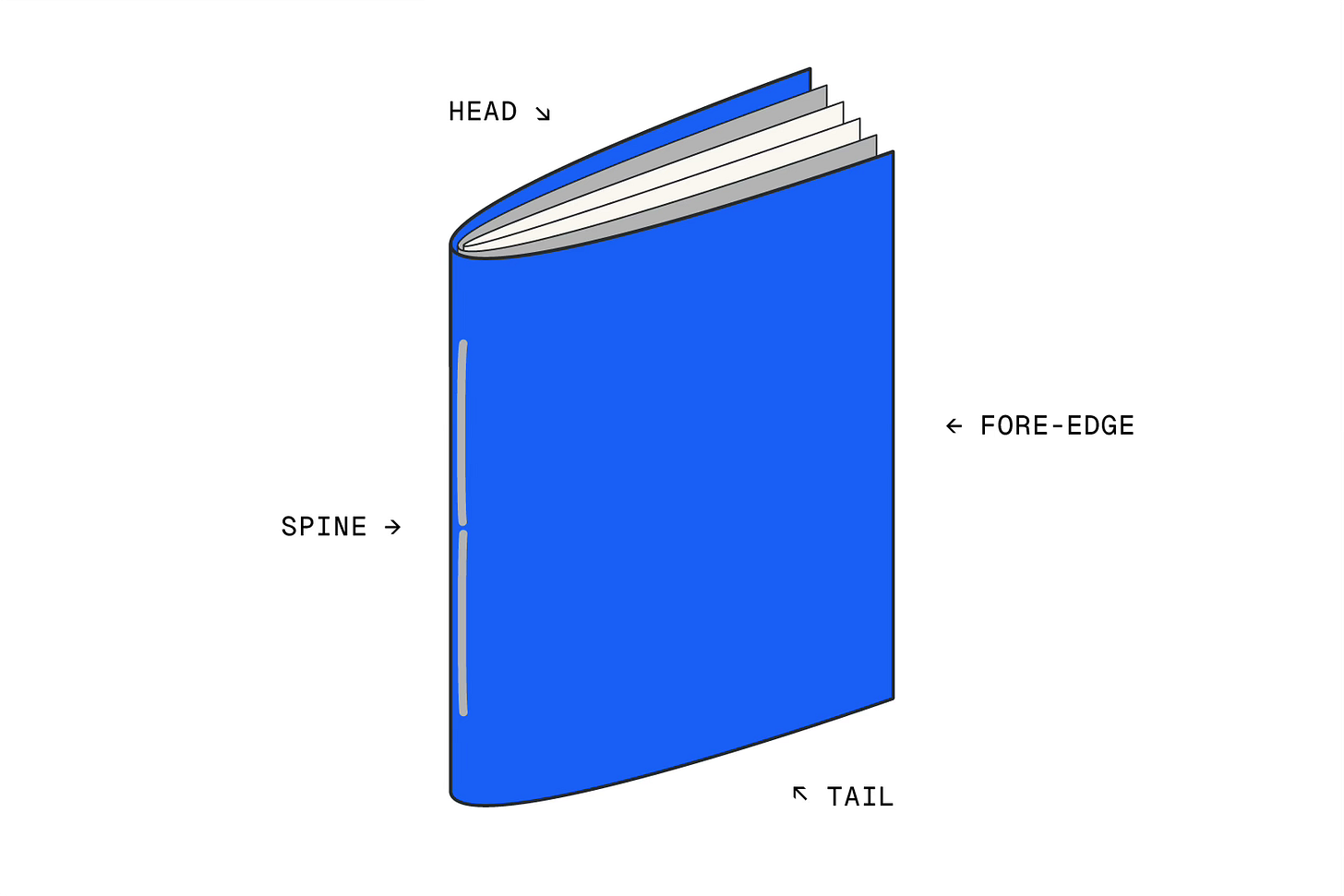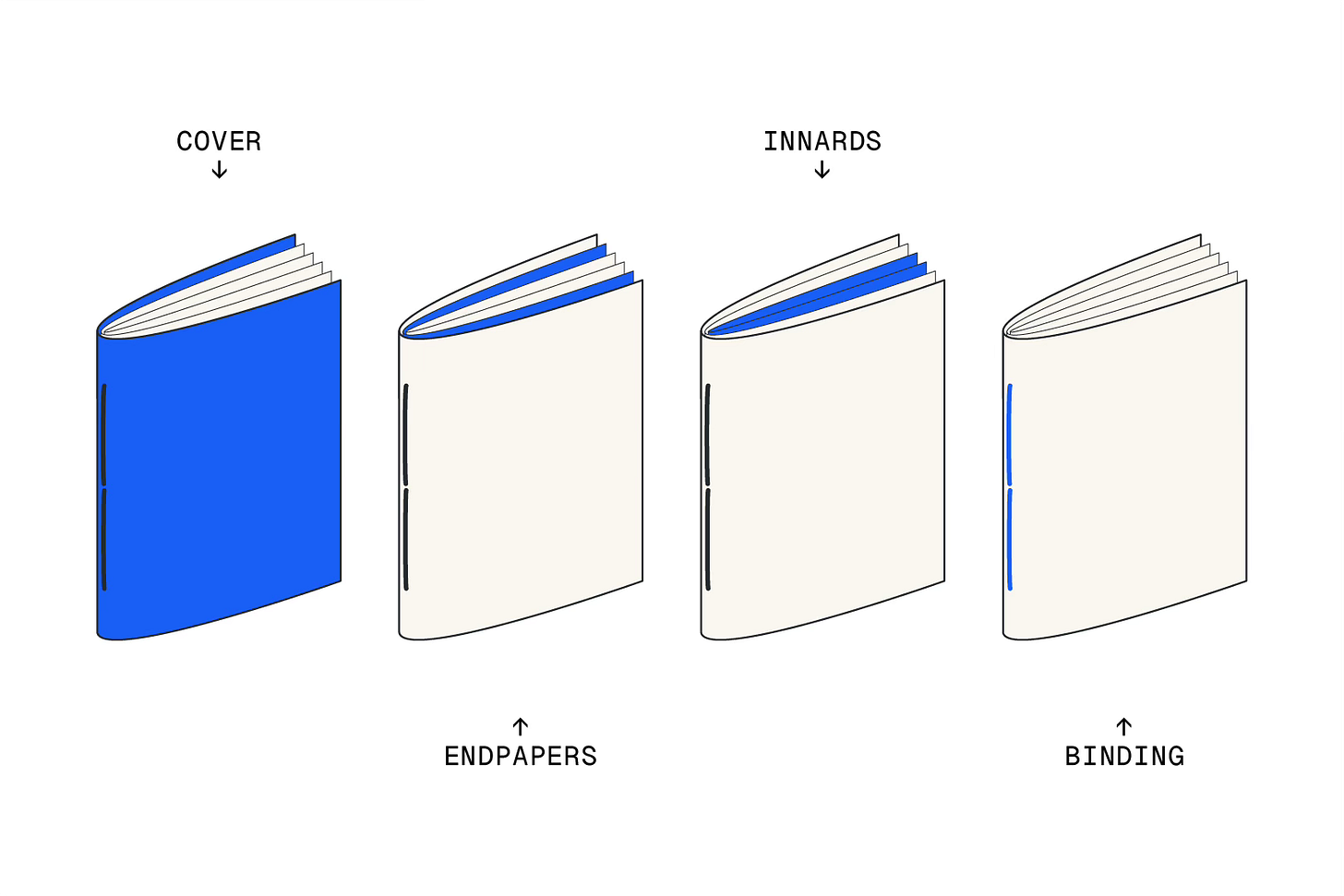Choosing the Perfect Notebook
Page 2: Three things to consider when buying your next notebook
Have you ever stopped to think about what makes a notebook feel perfect? Not just the ideas we put inside, but the notebook itself—its structure, its anatomy. From the weight of the paper to the type of binding, every detail contributes to a design that should go unnoticed, seamlessly supporting your work. The cover, the binding, the perfectly spaced lines—they’re not just features; they’re the foundations of how your ideas take shape.
All books share the same basic structure: a head, a tail, a spine, and a fore-edge. But beyond that, everything from the type of paper to the binding style can be changed. Let’s break down what makes a great notebook work so well. Because, as with most things, the details are everything.
The details are not the details. They make the design.
— Charles Eames
When it comes to bookbinding, there are really only two types of books: ones to read, and ones to write in. While they might seem similar at first glance, each serves a very different purpose. Like most good design, the form should follow the function.
Books that you read can be made cheaply. They're read once, maybe twice, then sit on a bookshelf or end up in a charity shop. But books you write in? They’re different. They need to be lightweight, flexible, portable. Designed to work with you, not against you. But they also need to be strong—to handle whatever you throw at them. They need to last as long as you do.
The paper
Thick or thin, smooth or textured—the paper choice affects the overall feel of a book. Is the cover strong and sturdy, or flexible? Is it decorative or minimal? How does a pen move across the page? Good paper doesn’t bleed or smudge; it keeps your work crisp, clean, and clear. All of this affects how your ideas flow. The right paper invites you to keep working. It inspires you.
The binding
Binding holds everything together—without it, your ideas are all over the place, literally. Sewn bindings are by far the strongest and most flexible. Staples are the next best thing to sewing, but the metal will eventually rust. Glue bindings have their benefits, but they usually prevent a book from opening flat. And don’t get me started on ring/wire binding. Bulky, obstructive, and impossible to work across two pages. Awkward for hand placement too. I could go on...
The size
Size matters—at least when it comes to notebooks. It all depends where and how you use them. A4 fits your desk, A5 fits your bag, and pocket notebooks are great for ideas on the run. The right size ensures that your notebook fits into your life, not the other way around. It’s all a very personal thing; my preference is around A5 size. Enough space to work but easy to travel with. What’s your preference?
That’s all for now folks. We’ll be diving deeper into some of the finer details over the coming weeks, so stay tuned for that. Next time you reach for a notebook, maybe you’ll consider its anatomy a little more. Because when the details are right, your work will flow, and your notebook will become a partner in your process.






